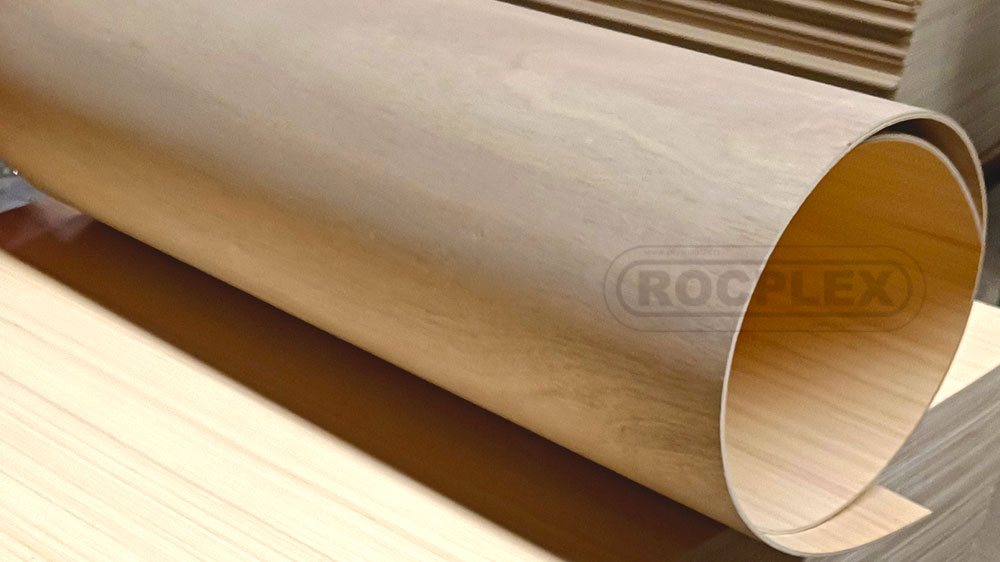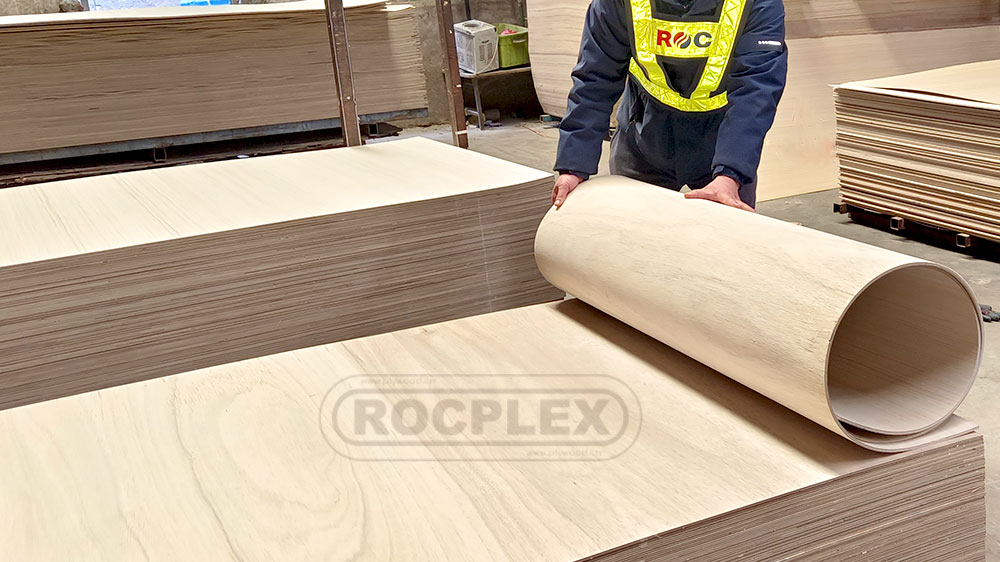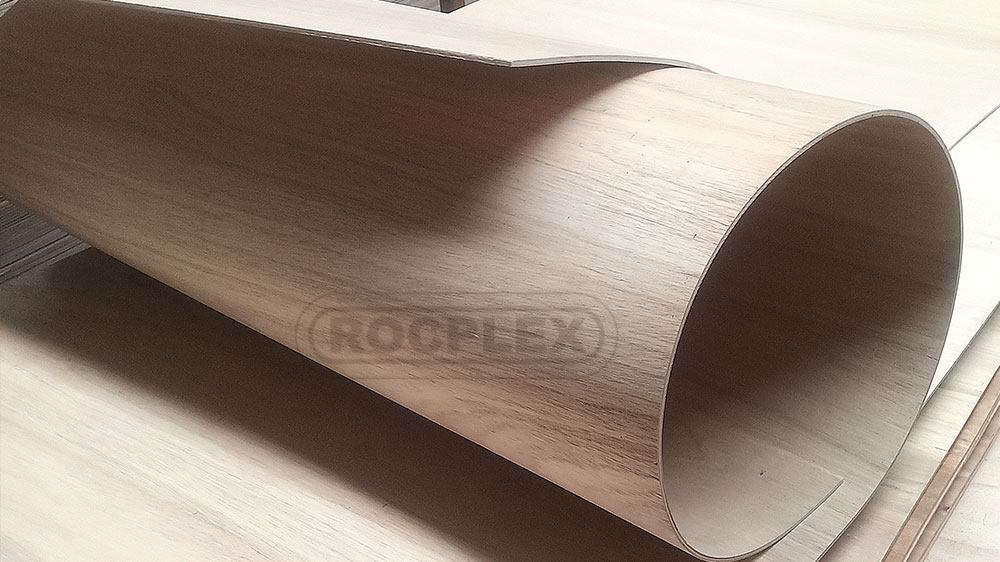What is Bendable Plywood?
Bendable plywood, a groundbreaking material in the construction and design realm, stands out for its unique ability to bend without cracking. This flexibility opens a new world of possibilities for architects and designers. Unlike traditional rigid plywood, bendable plywood, also known as bending plywood or bendy plywood, is specially manufactured to be flexible. This is achieved through a specific layering process, where the grains of each ply are aligned in the same direction, allowing the plywood to curve effortlessly.
This adaptability makes it an ideal choice for creating curved structures, such as arched doorways, circular furniture, and innovative interior designs. Not only does it maintain structural integrity when bent, but it also retains the strength and durability associated with traditional plywood. Its versatility and ease of use have quickly made it a favorite among professionals in various industries, ranging from furniture makers to construction engineers.
Exploring the Versatility of Bendable Plywood
Innovative Architectural Applications
Bendable plywood has revolutionized architectural design by enabling the creation of shapes and structures that were once impossible or too costly with traditional materials. Its ability to bend makes it perfect for constructing intricate architectural details, such as curved walls, ceilings, and custom joinery. This flexibility has not only expanded the boundaries of architectural design but also allowed for more organic and fluid forms in construction, echoing the growing trend towards eco-friendly and nature-inspired buildings.
Furniture Design and Interior Decoration
In the realm of furniture design and interior decoration, bendy plywood has become a material of choice for its aesthetic appeal and functional adaptability. Designers utilize it to craft unique, ergonomic furniture pieces that combine form and function. Its smooth surface and bendable nature make it suitable for creating modern, curved furniture pieces that are not only visually appealing but also comfortable and durable.
Custom Cabinetry and Woodworking
Bendy plywood’s adaptability extends to custom cabinetry and intricate woodworking projects. Its flexibility allows for seamless integration into various designs, especially in spaces that require curved or non-linear components. From kitchen cabinets to built-in storage solutions, bendable plywood offers a practical yet stylish option for custom woodworking.
The Environmental and Sustainable Aspect of Bendable Plywood
Eco-Friendly Manufacturing Processes
One of the notable advantages of bendable plywood is its environmentally friendly manufacturing process. Many producers of bending plywood adhere to sustainable practices, including sourcing wood from responsibly managed forests and using non-toxic adhesives and finishes. This commitment to sustainability not only reduces the environmental impact but also appeals to consumers and businesses seeking eco-conscious materials.
Longevity and Durability
Durability is a key factor in sustainable building materials, and bendable plywood excels in this area. Despite its flexibility, it maintains the strength and longevity associated with traditional plywood, ensuring a long lifespan for the structures and items it’s used in. This durability reduces the need for frequent replacements, contributing to less waste and a lower environmental footprint over time.
Recycling and Reusability
Bendable plywood’s lifecycle extends beyond its initial use. Many types of bendy plywood can be recycled or repurposed, adding another layer to its eco-friendly credentials. The ability to recycle and reuse the material aligns with modern sustainable building practices, further enhancing its appeal in an increasingly environmentally conscious market.
The Economic Impact of Bendable Plywood
Cost-Effective Solutions for Complex Designs
Bendable plywood offers a cost-effective solution for complex architectural and design projects. Its ease of use and flexibility reduce labor and material costs, as it eliminates the need for multiple pieces and intricate joinery required with rigid materials. This economic efficiency makes it an attractive option for both large-scale construction projects and smaller, custom designs.
Market Growth and Industry Adoption
The increasing popularity of bendable plywood has led to significant market growth, with more industries adopting this versatile material. Its application in sectors like furniture, construction, and interior design has expanded, reflecting its versatility and economic advantages. The continued growth and adoption of bendable plywood signal a promising future for this innovative material in various industries.
As we delve deeper into the applications and benefits of bendable plywood, it becomes clear why this material is becoming a staple in modern design and construction. Its flexibility, sustainability, and economic advantages offer a glimpse into the future of building and design, where creativity and eco-consciousness go hand in hand.
Advanced Applications of Bendable Plywood in Various Industries
Innovative Transportation Design
Bendable plywood is not limited to stationary structures; it has also found its way into the transportation industry. Vehicle designers are increasingly incorporating bendy plywood in the interiors of buses, trains, and even yachts. Its light weight, combined with its strength, makes it an ideal choice for crafting curved panels and fittings that conform to the unique contours of vehicles, contributing to both aesthetic appeal and functional ergonomics.
Theatrical and Stage Design
In the world of theater and stage design, bendable plywood plays a pivotal role. Its ability to easily transform into various shapes and forms enables set designers to create more elaborate and dynamic stage settings. This flexibility is particularly beneficial in productions that require quick set changes or versatile scenery, making bendable plywood a favored material among stagecraft professionals.
Use in Art Installations and Sculptures
The art world has embraced bending plywood for its unique qualities. Artists and sculptors use it to create intricate and fluid shapes that challenge the conventional boundaries of wooden art. The material’s flexibility allows for a new dimension of creativity, enabling artists to produce large-scale installations and sculptures that are both visually striking and structurally sound.
Technical Aspects and Manufacturing of Bendable Plywood
The Manufacturing Process
Understanding the manufacturing process of bendy ply is crucial to appreciating its unique properties. The process begins with selecting the right species of wood, typically those with naturally flexible characteristics. Layers of this wood are then thinly sliced and stacked with their grain patterns aligned. This alignment is key to the plywood’s flexibility. Special adhesives that maintain the wood’s bendable qualities without compromising strength are used to bind these layers together.
Customization and Variety
Bendable plywood comes in various thicknesses and grades, allowing for customization based on specific project needs. Manufacturers also offer options in terms of the type of wood, finishes, and sizes, catering to a wide range of applications. This versatility is a significant advantage for designers and builders seeking materials that can adapt to their specific design requirements.
Health, Safety, and Environmental Compliance
Adherence to Safety Standards
Health and safety are paramount in the production and use of bendable plywood. Manufacturers ensure that their products meet stringent safety standards, including low emissions of volatile organic compounds (VOCs). This commitment to safety is especially important in indoor applications, where air quality is a concern.
Environmental Compliance
In addition to its sustainable manufacturing processes, bendable plywood production often adheres to various environmental compliance standards. These may include certifications like FSC (Forest Stewardship Council) or PEFC (Programme for the Endorsement of Forest Certification), which assure that the wood is sourced from responsibly managed forests. Such certifications are not only a testament to the environmental responsibility of the manufacturers but also serve as a mark of quality and sustainability for consumers.
The Future of Bendable Plywood in Sustainable Building
Innovative Building Techniques
The future of sustainable building sees bendable plywood at the forefront of innovation. Architects and builders are continuously exploring new ways to incorporate this material into eco-friendly and energy-efficient designs. Its application in modular and prefabricated construction is particularly promising, offering a sustainable alternative to traditional building methods.
Research and Development
Ongoing research and development in the field of bendable plywood aim to further enhance its properties and applications. This includes exploring new wood species, developing more eco-friendly adhesives, and improving manufacturing techniques to increase efficiency and reduce environmental impact. Such advancements will undoubtedly open up even more possibilities for this versatile material.
Bendable plywood’s journey from a niche building material to a key player in diverse industries highlights its adaptability, sustainability, and economic value. As we continue to explore its potential, it becomes evident that bendable plywood is not just a material for the present but a foundation for future innovations in design and construction.
Real-World Case Studies: Bendable Plywood in Action
Iconic Architectural Projects
One of the most striking examples of bendable plywood in architecture is the ‘Wave House,’ a residential project that features a flowing, wave-like exterior made possible by the flexibility of bendy plywood. This project not only demonstrates the aesthetic capabilities of the material but also its structural integrity, showcasing how it can be both a functional and visual centerpiece.
Breakthroughs in Modern Furniture Design
In the realm of furniture design, bendable plywood has enabled the creation of ergonomic and organic shapes. A notable example is the ‘Serpentine Chair,’ a piece that combines comfort and style, sculpted entirely from bending plywood. This chair represents the perfect blend of form and function, highlighting the material’s potential in creating durable, comfortable, and visually appealing furniture.
Innovative Interior Solutions
Bendable plywood has been instrumental in transforming interior spaces. For instance, a boutique hotel in Paris utilized bendy plywood to create a series of undulating, seamless wall panels that double as artistic features and functional elements. This application not only enhances the aesthetic appeal of the space but also demonstrates the material’s versatility in interior design.
Pushing the Boundaries: Experimental Uses of Bendable Plywood
Artistic Installations and Exhibitions
Flexible plywood flexibility and strength have made it a favorite in artistic installations. One remarkable example is the ‘Flowing Forms’ exhibition, where artists created large, intricate sculptures that mimic natural shapes using bendy plywood. These installations challenge traditional perceptions of wood as a rigid material, showcasing its potential in the world of art.
Integration in Landscape and Garden Design
In landscape and garden design, bendable plywood has been used to create organic, flowing structures that harmonize with natural surroundings. From curved benches to sculptural garden features, this material blends functionality with environmental aesthetics, providing a sustainable and artistic solution for outdoor spaces.
Looking Ahead: The Evolving Role of Bendable Plywood
Technological Integration and Smart Buildings
The future of bendable plywood also includes its integration with technology. In smart buildings, bendy plywood can be used in conjunction with sensors and other technologies to create adaptive and responsive environments. This integration represents the next step in the material’s evolution, combining its physical flexibility with technological innovation.
Global Trends and Market Expansion
As awareness of bendable plywood benefits grows, its market is set to expand globally. This expansion will likely see increased use in emerging economies and developing countries, where its sustainability and versatility can address diverse construction and design needs. The material’s adaptability to different cultural and environmental contexts underlines its global appeal.
FAQs About Bendable Plywood
- What plywood is good for bending?
Bendable plywood, specifically designed for flexibility, is ideal for bending. It is engineered to bend without cracking, making it perfect for curved designs. - Which plywood is most flexible?
Bendy plywood, also known as flexible plywood, is the most adaptable. Its unique manufacturing process allows it to bend more than standard plywood. - What is bendy plywood?
Bendy plywood is a type of plywood specifically designed to be flexible. It’s used in applications where curves and fluid shapes are required. - What is the disadvantage of Flexi ply?
The main disadvantage of Flexi ply can be its cost compared to regular plywood and limitations in bearing heavy loads like standard plywood in certain applications. - How is Flexi ply different to plywood?
Flexi ply, or bendable plywood, differs from regular plywood in its ability to bend. It’s made with layers of wood veneers aligned in the same direction, allowing it to flex.
Post time: Apr-13-2024




